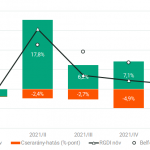NBER Working Paper No. 21574
Issued in September 2015
NBER Program(s): IFM
The question of what is a sustainable public debt is paramount in the macroeconomic analysis of fiscal policy. This question is usually posed as asking whether the outstanding public debt and its projected path are consistent with those of the government’s revenues and expenditures (i.e. whether fiscal solvency conditions hold). We identify critical flaws in the traditional approach to evaluate debt sustainability, and examine three alternative approaches that provide useful econometric and model-simulation tools to analyze debt sustainability. The first approach is Bohn’s non-structural empirical framework based on a fiscal reaction function that characterizes the dynamics of sustainable debt and primary balances. The second is a structural approach based on a calibrated dynamic general equilibrium framework with a fully specified fiscal sector, which we use to quantify the positive and normative effects of fiscal policies aimed at restoring fiscal solvency in response to changes in debt. The third approach deviates from the others in assuming that governments cannot commit to repay their domestic debt, and can thus optimally decide to default even if debt is sustainable in terms of fiscal solvency. We use these three approaches to analyze debt sustainability in the United States and Europe after the recent surge in public debt following the 2008 crisis, and find that all three raise serious questions. This paper is available as PDF (1896 K) .
Nem található esemény a közeljövőben.
A KRTK Közgazdaság-tudományi Intézet teljesítményéről A KRTK KTI a RePEc/IDEAS rangsorában, amely a világ közgazdaság-tudományi tanszékeit és intézeteit rangsorolja publikációs teljesítményük alapján, a legjobb ... Read More »

Tisztelt Kollégák! Tudományos kutatóként, intézeti vezetőként egész életünkben a kutatói szabadság és felelősség elve vezetett bennünket. Meggyőződésünk, hogy a tudomány csak akkor érhet el ... Read More »

Srí Lanka: a 2022-es gazdasági válság leckéje – A. Krueger Lessons from Sri Lanka Anne O. Krueger Jul 25, 2022 – Project Syndicate ... Read More »

A permanens válság korában élünk – J. Meadway We’re living in an age of permanent crisis – let’s stop planning for a ‘return ... Read More »

A 2021 végén, illetve 2022 elején tapaszalt 6, illetve 7%-os cserearányromlás brutális reáljövedelem-kivonást jelentett a magyar gazdaságból. A külső egyensúly alakulásával foglalkozó elemzések többnyire ... Read More »
